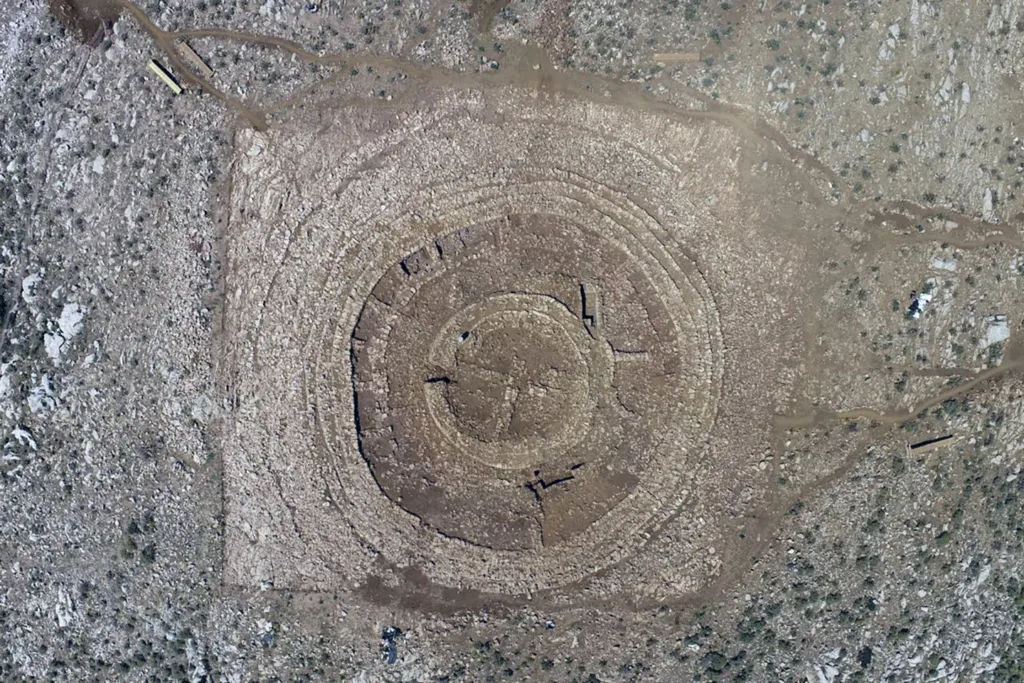A recently discovered 4,000-year-old stone building on a hilltop in Crete is puzzling archaeologists and potentially delaying a major airport project on the Greek tourist island.
Greece’s Culture Ministry announced that the structure, from Crete’s Minoan civilization, is a “unique and extremely interesting find.” Known for their opulent palaces, elaborate art, and mysterious writing, the Minoans left behind the labyrinthine 1,800-square-meter (19,000-square-foot) building, which looks like a huge car wheel from above.
According to Apnews.com, the site was designated for a radar station to support a new airport near Kastelli, slated to open in 2027. In the article by Nicholas Paphitis it is mentioned that this new airport is expected to replace Greece’s second-largest airport in Heraklion and accommodate up to 18 million travelers annually.
The purpose of the hilltop structure remains unknown as it is still under excavation and has no known Minoan parallels. Experts speculate it could have served a ritual or religious function.
The building is surrounded by eight stepped stone walls up to 1.7 meters (5.6 feet) high, with an inner structure divided into smaller, interconnected spaces, possibly topped by a shallow conical roof.

The Culture Ministry’s statement indicated the structure was likely not a dwelling, citing the large quantity of animal bones found inside. It suggested the building may have been used periodically for ritual ceremonies involving food, wine, and offerings.
“This structure’s size, architectural layout, and careful construction required considerable labor, specialized know-how, and robust central administration,” the ministry said, highlighting its communal significance.
Culture Minister Lina Mendoni, an archaeologist, assured that the discovery would be preserved, and an alternative location for the radar station would be sought.
The ministry said the building was mainly used between 2000-1700 B.C, and was founded around the time Crete’s first palaces were being built — including at Knossos and Phaistos.
It said some of its features were comparable with early Minoan beehive tombs that were surmounted by stepped conical roofs and burial mounds in other parts of Greece.
Source: AP news
